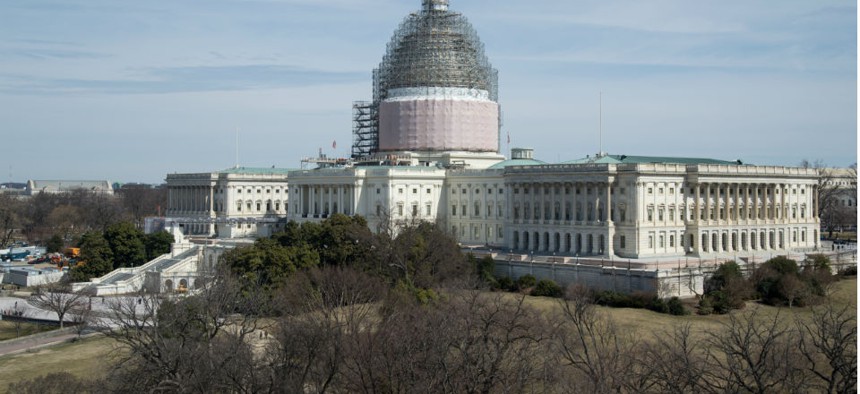Senate Joins House in Targeting Federal Workforce for Deficit Reduction
Upper chamber approves its own budget resolution, which also cuts agency spending and employee compensation.
The Senate early Friday morning narrowly approved a budget resolution that includes cuts to the federal workforce, higher pension contributions and changes to health care benefits.
The changes would result in $170 billion in savings over 10 years on the backs of federal employees, Senate Budget Committee aides said when the budget was unveiled last week. The recommendations were based in part on suggestions made by the National Commission on Fiscal Responsibility and Reform -- known as the Simpson-Bowles Commission -- which called for cuts to the federal workforce and civil servants’ compensation as part of a larger deficit reduction effort.
The Senate blueprint passed 52-46 around 3:30 a.m., after hours of debate and a vote-a-rama on more than 40 amendments.
Like their House counterparts, Senate Republicans included a provision to create a 50-50 split in federal employee and agency contributions to defined benefits packages. This would result in feds contributing 6.35 percent of their paychecks toward their pensions, or an effective 5 percent pay cut for most workers.
The budget would instruct agencies to fill only a portion of the vacancies created when current federal employees leave or retire. It would also make changes to the Federal Employees Health Benefits Program to make it “more affordable.”
Overall, the plan would slash discretionary spending at non-Defense agencies by $236 billion below sequestration caps over 10 years. Budget Committee staffers said their blueprint would streamline and consolidate programs, but added a significant portion of those savings would stem from reductions in benefits spending by agencies.
Among the dozens of amendments considered, lawmakers rejected a measure from Sen. Rand Paul, R-Ky., which would have boosted Defense spending while further cutting non-Defense agency funding. Under the Senate blueprint, Defense spending would stay in line with caps required by the Budget Control Act. The plan does not dramatically increase emergency spending in the Overseas Contingency Operations fund, as does the House proposal, but would create a Defense reserve fund for future Pentagon expenditures.
The House on Wednesday approved its own budget resolution, which includes even more drastic budget cuts. Republican leaders in the two chambers ultimately plan to reach a unified budget through a conference committee and approve a final resolution by mid-April.
Despite outcry from the White House and congressional Democrats, a unified budget would not require President Obama’s signature. Obama has vowed to veto any spending measure -- once the appropriations process is completed -- that continues sequestration spending cuts.




